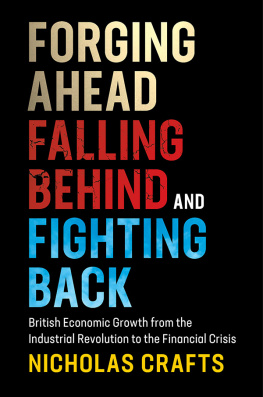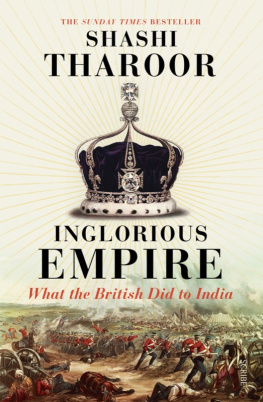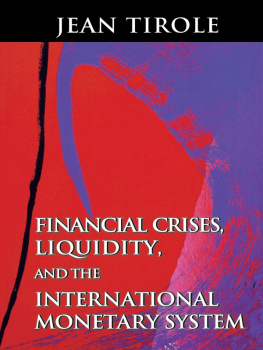JOHN BULLIONS EMPIRE
Britains Gold Problem and India Between the Wars
Centre of South Asian Studies,
School of Oriental and African Studies,
University of London
LONDON STUDIES ON SOUTH ASIA
9. Khizr Tiwana, the Punjab Unionist Party and the Partition of India
Ian Talbot
10. John Bullions Empire
G. Balachandran
First published in 1996
by Curzon Press
This edition published 2013 by Routledge
2 Park Square, Milton Park, Abingdon, Oxon, OX14 4RN
711 Third Avenue, New York, NY 10017
Routledge is an imprint of the Taylor & Francis Group, an informa business
1996 G. Balachandran
Typeset by LaserScript, Mitcham, Surrey
All rights reserved. No part of this book may be reprinted or reproduced or utilised in any form or by any electronic, mechanical, or other means, now known or hereafter invented, including photocopying and recording, or in any information storage or retrieval system, without permission in writing from the publishers.
British Library Cataloguing in Publication Data
A catalogue record for this book is available from the British Library
Library of Congress in Publication Data
A catalogue record for this book has been requested
ISBN 0-7007-0428-0
Contents
This book began as a Ph.D. thesis at the School of Oriental and African Studies, University of London. Professor K.N. Chaudhuri was always a stimulating and friendly supervisor, patiently overseeing the transformation of extremely cryptic draft chapters into an acceptable graduate thesis. Professor Chaudhuri was also an extraordinary source of support, particularly in circumstances which required me to be away from London for extended periods. I take this opportunity to thank him warmly.
I am indebted to the Indian Council for Social Science Research for a research grant that enabled me to collect additional material for this book at archives in U.K. and U.S.A. In addition I would like to record my appreciation of the help and assistance rendered by Rosemary Lazenby and Mary Leone at the Federal Reserve Bank of New York, and Henry Gillett and Elizabeth Osborne at the Bank of England. The book has also drawn on materi l scattered around other archives and depositories in England, the U.S.A., and at the National Archives in India. I am grateful to the staff of these institutions for help and support. Earlier versions of have appeared respectively in South Asia, the Economic History Review, and the Modern Asian Studies.
Apart from the mandatory reader, Peter Robb and Sanjay Subrahmanyam commented on the draft manuscript. Peter Robb, in particular, and Michael Hutt also helped greatly with the publication of the book, while Sanjay has been an abiding source of help and good advice. My thanks to all of them. In its present form the book was largely written at the Delhi School of Economics and I would like to take this opportunity to acknowledge my debt to colleagues at the Department of Economics. I am grateful to the Centre for Development Economics for infrastructural and other support.
No words can adequately express my gratitude to Molly. Apart from being a scholar in her own right she has been an immense source of support, particularly during periods when we were separated by long distances and the security and immigration regimes of two mutually hostile countries. Happily, Piroun who came into this world just as this work was reaching its end, did not have to endure the long gestation that has gone into the making of this book.
I cannot thank my parents or recompense them adequately for all that I owe them. This book, which is dedicated to them, is partly a token of that debt.
G. Balachandran
Delhi
1 May 1996
There is a curious asymmetry between the approaches historians adopt towards Indias significance to the world economy and to Britains external accounts during the pre-1914 and the interwar periods. Indias role as a protagonist of the late-nineteenth century multilateral trading system, and the contribution she made to settling Britains deficits with the rest of the world and facilitating her capital exports, has been well-known ever since Saul underlined it more than three decades ago.1 Even scholars inclined to question the economic value to Britain of her prewar empire recognize that control over Indian surpluses was crucial to preserving her adherence to free trade.2 Indias contribution to the smooth operation of the prewar sterling-centred gold standard has also attracted scholarly attention.3 Besides, late-nineteenth century Indian monetary controversies are held to have provided the focus for similar controversies within Britain: the colony was of strategic importance to both sides of the British currency debate, and occupied a pivotal role in the wider, international bimetallic controversy. At stake in this clash between the City [of London] and Britains productive sectors was not merely the monetary standards of a few countries, but the future orientation of Britains economic development, and of her trading links with the rest of the world.4
In striking contrast, scholars of the interwar period appear to have become victims of a collective amnesia. Although contemporaries appear to have viewed the matter differently, modern accounts of the interwar international monetary system tend invariably to focus on the industrial economies. Even where non-industrial economies are not entirely ignored, India hardly rates a mention in accounts of the interwar gold standard.5 Studies of Britains external sector during these years too do not usually look beyond the decline in her cotton textile exports to India, while for historians of British politics dealing with the empire, British-Indian financial and economic issues are interesting only to the extent they were reflected in the parliamentary crises facing the government of the day.6
Perhaps not surprisingly, historians of India too have fallen in with this neglect of the wider context of the colonys interwar financial affairs.7 Few historians could afford to ignore Sauls findings, but it was unclear how they fitted into the familiar frameworks of imperialism.8 Likewise, De Ceccos work on the prewar gold standard, although widely used by students of imperial financial arrangements, has never properly been integrated into mainstream interpretations of the economic relationships characteristic of colonialism which continue predominantly to emphasize the role of colonies as destinations for metropolitan finance or capital, and manufactures.9
India was never a major destination for British finance.10 Yet, weighed even in the Leninist balance, the colonys contribution to the health of prewar Britains external accounts could hardly be overlooked since on the eve of World War I, it was Britains largest single market accounting for nearly a sixth of her total exports. India remained a major market for British exports even after the war, though her share thereof nearly halved by 1930. The decline was most conspicuous in the area of cotton and other textiles and metals: British exports to India of these goods dropped from Rs. 730 million on the eve of the war to less than half that by the mid-thirties.11
It is widely recognized that World War I marked an important turning point in Britains role in the world economy. The changing economic significance of her Indian empire has also been speculated upon within this context. Apart from the colonys diminishing importance to her trade, the Little Englander attitudes arising from Britains interwar economic and financial problems are believed to have forced her into a gradual policy of withdrawing from India, which already by 1919, was a wasting asset.12 According to this view, the colonial authorities prepared the ground for their withdrawal through a careful process of constitutional reform the high-point of which was the Government of India Act of 1935 providing for a federal arrangement with elected assemblies and responsible governments at the centre and in the provinces. In the meantime, their financial priorities focussed defensively upon ensuring that Indias debts to Britain were punctually serviced.13








